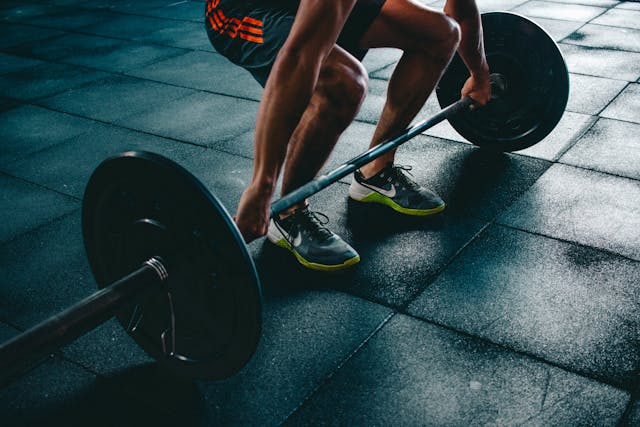
This is Part 2 of a post on fitness and nutrition. You can read the nutrition post here.
When I first started studying health sciences, it was the nutrition I was looking forward to. I honestly thought the exercise classes were something I would just have to slog through. But lo and behold, I soon found out that I loved them. Loved them. Aerobic exercise, strength training, flexibility, prescribing fitness programs, all of it. Unfortunately, it also didn’t take me long to realize that the fitness industry in general is…. problematic. I follow a few lovely and balanced fitness creators, but overall, the fitness world tends to be toxic and unhealthy. So much focus on diet culture, gatekeeping, and obsessing over certain body types (spoiler: you can be perfectly fit without washboard abs!)
I used to belong to a Facebook group for my gym, but I didn’t last very long. For one thing, the attitudes of the vast majority were incredibly frustrating, and for another, spaces like that tend not to like people like me very much. People berated themselves – and others – for not being a size four, not spending 3 hours in the gym, and not eating however they deem appropriate. Once there was a poor guy who was absolutely beside himself with self-flagellation because he got hungry and had a spoonful of peanut butter. He thought he’d undone all his progress in the gym. The comments were overwhelmingly something like this: “We all make mistakes!” “You just have to get back on track tomorrow!” “Run an extra mile to make up for it!” Because he had a normal human need for food and did something about it! People are oddly snotty about exercise. Just before I sat down to write this, I saw a post on Threads that said, “If you run with headphones, you don’t love running. You love distractions. Running is about being in your own head, not escaping it. Lose the headphones.” Which is beyond silly. Listen to music if you’d like. Listen to a podcast. Listen to an old episode of The Office. There are no rules.
But I digress. Here are 10 fitness facts that some people will argue are controversial (though they shouldn’t be)
1. There’s nothing magical about 10,000 steps. This one won’t die. There is no real reason to aim for 10,000 specifically. The 10,000 steps recommendation came from a company selling pedometers, not from actual science. Research suggests that the sweet spot is more like 6,500, but getting even 4,000 a day has tremendous health benefits over getting less. Yes, absolutely, prioritize moving throughout the day (see point 8), but there’s no need to overthink it. I’m a little embarrassed to say that there was a point in time that I paced around my bedroom at night if I hadn’t yet hit my 10,000 for the day. These days I get excited if I go to bed having logged 9,998, because I’m a rebel like that.
2. You can’t spot reduce fat. Please don’t be enticed by personal trainers or exercise programs that promise a snatched waist, or thinner arms, or a smaller butt. Exercise doesn’t work that way. Yes, you can strengthen individual and sets of muscles, but fat loss comes from burning more energy than you take in. You don’t get to decide where it comes from. Your body decides that. Some people’s weight loss first appears in their face. Some in their thighs. Others in their hips. Etc. And despite what your fellow gym goers may tell you, fat does NOT turn into muscle when you exercise. They are two entirely different types of tissue, and one turning into the other is physiologically impossible. What you can do is simultaneously strengthen your muscles and lose fat that’s over it (again, only if your energy output exceeds your input), revealing the muscle that’s underneath.
3. Walking is an underrated form of exercise. Here’s where I admit some bias, because I am a HUGE fan of walking. I love walking. So it makes me particularly crazy when people imply, or just come right out and declare, that walking doesn’t count as exercise. Of course it counts! Walking is a low-impact exercise that: strengthens bones and muscle, boosts heart health, aids in weight loss, increases endurance, improves mood and mental clarity, enhances sleep, and improves energy. I also love that it is so flexible in terms of what kind of workout it gives you. You can take a leisurely stroll, or you can get your sweat on by increasing speed/incline/distance. ANY exercise that gets your blood pumping and your heart beating faster has health benefits. You don’t have to run if you don’t like it.
4. There is no singular “look” of a fit person. Last year at this time, I was about 20 pounds lighter than I am right now. Why? Because I was depressed. Because I wasn’t eating right. Because I wasn’t prioritizing my physical health. Because I wasn’t taking care of myself. A friend I hadn’t seen in a while gushed over my body, complimenting me on getting in shape. I was absolutely not in shape. I am FAR more physically fit right now, the extra 20 pounds and all. Fit bodies come in all shapes and sizes. Some people have visible abs, some do not. Some have super-defined arms, some do not. Some are thin, some are not. Some of the strongest people I know live in larger bodies. Stop thinking you can judge someone’s physical fitness by their appearance.
5. Aerobic exercise, strength training, and stretching are all important for different reasons. “Focus on strength training!” “Prioritize cardio!” “All you need is yoga/pilates/stretching!” The fact is, they all serve distinct purposes, and they’re all important. Ideally, you should get a little bit of all three. Cardio improves heart and lung health, strengthens the entire body, boosts energy and endurance, enhances mood and can reduce anxiety/depression. It can also aid in weight maintenance. Strength training builds and preserves your muscle mass, increases bone density (important in preventing osteoporosis), boosts your metabolism, and improves your functional strength. This makes it easier to perform all your daily tasks. Stretching increases your range of motion and flexibility. It reduces your risk of injury. It promotes relaxation and stress relief. It soothes muscle tension and soreness. Again, there’s no reason to overthink this. Take a walk (or run or dance or swim or whatever you like) on most days. Lift heavy things or use your body weight around 3 times a week. Stretch before & after you exercise, and/or when you get up or before you go to bed, or anytime you feel like it.
6. You should aim for 150 – 300 minutes of moderate activity a week, but there is such a thing as too much! A good general rule of thumb is at least 150 minutes of moderate activity a week (any activity that raises your heart rate and makes you breathe a little harder, without losing the ability to speak) OR at least 75 minutes of vigorous activity (this is more challenging, causing a faster heartrate and deeper breathing, and difficulty carrying on a conversation without pausing for breath) You can also do any combination of the two. Keep in mind though that there can be too much of a good thing! Too much exercise causes undue additional stress on the body, creates diminishing returns, and increases your chance of injury. It also greatly increases your chances of an unhealthy and obsessive relationship with movement, and a host of physical issues, such as loss of menstrual cycles. It can cause mood swings, irritability, and depression. It can weaken the immune system, cause hormone and sleep disturbances, and weaken or plateau all the hard work you’ve done and progress you’ve made. Rest is so, so important! (see next point) If you’re not training for a marathon or an elite-level athlete, spending hours and hours in the gym is not only unnecessary, it’s dangerous and unhealthy. Balance, balance, balance.
7. Rest days are an important part of any fitness program, and should never be skipped. Your body needs the proper balance of movement, rest, and recovery. There is no prize at the end of your life for pushing it beyond what is healthy. Rest days are every bit as important as workout days!! Here’s why: stress + recovery = growth. Your muscles actually get stronger when they are at rest! You do the hard work in the gym – or wherever – and then when you rest, your muscles have a chance to repair and rebuild. Resting helps prevent injury, as constant strain increases your risk of things like strains, sprains, and stress fractures. It helps to reduce burnout and fatigue, and it supports a healthy immune system. It also conversely improves performance and helps your body to come back stronger with more energy, and ready to push harder during your next workout. Your body needs rest. When in doubt, always listen to your body.
8. Daily NEAT is important, and it all adds up. Non-Exercise Activity Thermogenesis (NEAT) is a vital part of your physical fitness and overall health. This includes any physical activity that isn’t intentional exercise such as walking around your house, cleaning, yard work, running errands, shopping, even fidgeting. Standing/walking around every hour or so (especially if you work a desk job) has significant benefits to your health and weight management. Inactivity and excessive sitting is linked to so many health problems! It is associated with a higher risk of all-cause mortality, it can raise the risk of cardiovascular disease, Type 2 diabetes, weight gain, musculoskeletal issues, back, shoulder, hip pain, depression & anxiety, and certain cancers. NEAT is just as important as dedicated workouts. Be mindful of how much you’re sitting.
9. Before and Afters don’t tell the whole story. I’d argue that they don’t tell much of a story at all. I am not a fan of people who promote their personal training, fitness programs, etc with Before and Afters. First, there’s no such thing as “After,” I guess unless the person is deceased. Any pictures you take are simply “During.” Photographers use certain poses, lighting, makeup, posture, smile, etc. to make the person appear smaller. (Ever seen someone do a demonstration of two photos five minutes apart, with all of the above manipulated? The person looks 20 pounds lighter.) These pictures say absolutely nothing about lifestyle, health, relationship with food or exercise, how the weight was lost, mental state, etc. Take them with a grain of salt.
And finally:
10. The purpose of exercise is muscle & bone strength, good heart & lung health, flexibility, balance, mobility. It helps you carry out daily activities. It extends your lifespan. It makes you feel better, both mentally and physically. All things considered, it plays just a small role in weight management. Don’t look to exercise (or at least solely exercise) as a means to lose weight, because you’ll likely be disappointed. And like nutrition, it’s just one important piece of your overall health.
Let exercise be important for its own sake.








